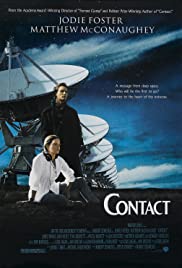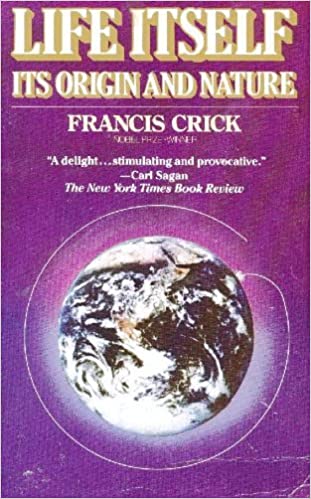Did Carl Sagan Think the Universe Shows No Design?
Like Fred Hoyle, he seems to have thought it showed design — until that view became politically associated with religion
It’s a complicated story. At one time, a religious skeptic like astronomer Carl Sagan (1934–1996) could write:
The universe was made on purpose, the circle said. In whatever galaxy you happen to find yourself, you take the circumference of a circle, divide it by its diameter, measure closely enough, and uncover a miracle — another circle, drawn kilometers downstream of the decimal point. There would be richer messages farther in. It doesn’t matter what you look like, or what you’re made of, or where you come from. As long as you live in this universe, and have a modest talent for mathematics, sooner or later you’ll find it. It’s already here. It’s inside everything. You don’t have to leave your planet to find it. In the fabric of space and in the nature of matter, as in a great work of art, there is, written small, the artist’s signature. Standing over humans, gods, and demons, subsuming Caretakers and Tunnel builders, there is an intelligence that antedates the universe. – Contact (1985)
For that matter, astronomer Fred Hoyle (1915–2001), known as an atheist, also said, contemplating the order in the building blocks of the universe,
From 1953 onward, Willy Fowler and I have always been intrigued by the remarkable relation of the 7.65 Mev energy level in the nucleus of 12C to the 7.12 Mev level in 160. If you wanted to produce carbon and oxygen in roughly equal quantities by stellar nucleosynthesis, these are the two levels you would have to fix, and your fixing would have to be just where these levels are actually found to be. Another put-up job? Following the above argument, I am inclined to think so.
A common sense interpretation of the facts suggests that a superintellect has monkeyed with physics, as well as with chemistry and biology, and that there are no blind forces worth speaking about in nature. The numbers one calculates from the facts seem to me so overwhelming as to put this conclusion almost beyond question.”
Fred Hoyle, “The Universe: Past and Present Reflections.” Engineering and Science, November 1981. pp. 8–12
What’s significant is that neither Sagan or Hoyle seems to be in a huge hurry to reassure us all that “science” will soon show that this was all an accidental disposition of atoms after all. Whatever they might think about the origin of the universe (Hoyle, for example, hated the Big Bang theory), they didn’t seem to think of science as something at either constrained their views or existed to confirm them.

Francis Crick (1916–2004), a lifelong atheist who, with James Watson, won the Nobel Prize for identifying the double helix structure of DNA, found it hard to believe that life evolved on Earth by slow Darwinian means. The evidence just didn’t point that way. In Life Itself: Its Origin and Nature (1981), he offered the view that more evolved intelligences had seeded life on Earth (directed panspermia).
And none of that simply sank their careers. Philosopher of biology Paul Nelson notes that the passage from Sagan’s Contact comes from the end of the book and is italicized there for emphasis:
And that sentence — “there is an intelligence that antedates the universe” — come on, that’s being deliberately provocative. In any case, mathematical objects such as pi, or prime numbers, have long held a special status as design indicia. The atheist radio astronomer and SETI researcher Jill Tarter, the real-life model for the Elli Arroway / Jodi Foster character in Contact, has said that she would regard the decimal expansion of pi, if detected by a radio telescope, as a gold-standard indicator of extraterrestrial intelligence.
Paul Nelson, “Carl Sagan: “An Intelligence That Antedates the Universe”” at Evolution News and Science Today (June 14, 2022)
The evidence for extraterrestrials in Contact is a modification in the value of pi which can itself be arranged to produce a circle: “When Ellie looks at what the computer has found, she sees a circle rasterized from 0s and 1s that appear after 1020 places in the base 11 representation of π. This not only provides evidence of her journey, but suggests that intelligence is behind the universe itself.” – Wikipedia

In the current age of Cancel Culture, public figures in science must be much more careful with their speculations, of course. But Nelson suggests another factor that may have played a role: The rise of the intelligent design controversy:
In 1985, when Contact was first published, intelligent design as an intellectual position was largely confined to the edges of academic philosophy, in the work of people such as the Canadian philosopher John Leslie, and a few hardy souls in the neighborhood of books like Thaxton, Bradley, and Olsen, The Mystery of Life’s Origin (1984).
So Sagan (and Fred Hoyle, whose sci-fi novel The Black Cloud was credited by Richard Dawkins as the book having the greatest influence on him; the story opens with a design inference) could afford to play with notions of design detection, non-human intelligences, and the like. These ideas, which are exciting and full of fascinating implications, posed little risk to the dominance of naturalism in science. Detecting non-human intelligence made for good sci-fi.
Paul Nelson, “Carl Sagan: “An Intelligence That Antedates the Universe”” at Evolution News and Science Today (June 14, 2022)
But then came books like Darwin on Trial (Regnery, 1991) and The Design Inference (Cambridge University Press, 1998), which openly doubted randomness and advocated design. Then boundaries began to harden and the too-curious paid the price:
As boundary-pushers, both Sagan and Hoyle caught plenty of flak during their lifetimes. Sagan, for instance, was never elected to the National Academy of Sciences. Both paid a price for their popularity and willingness to write novels toying with non-human intelligences. It is interesting, then, to wonder how Sagan would have responded to ID, as articulated by Michael Behe, William Dembski, Stephen Meyer, etc., and how he might have separated his own views from it.
Paul Nelson, “Carl Sagan: “An Intelligence That Antedates the Universe”” at Evolution News and Science Today (June 14, 2022)
Today, design advocacy is ably represented by, for example, Steve Meyer’s mainstream book, The Return of the God Hypothesis (Harper One, 2021). Too bad a debate is precluded by mortality.
You may also wish to read: Recent science papers support science fiction premises. There isn’t a crystal clear boundary; both science and science fiction achievements require imagination. Of course, science can deal only in fact but many of the facts scientists are unearthing can support science fiction premises. Here are five examples.
